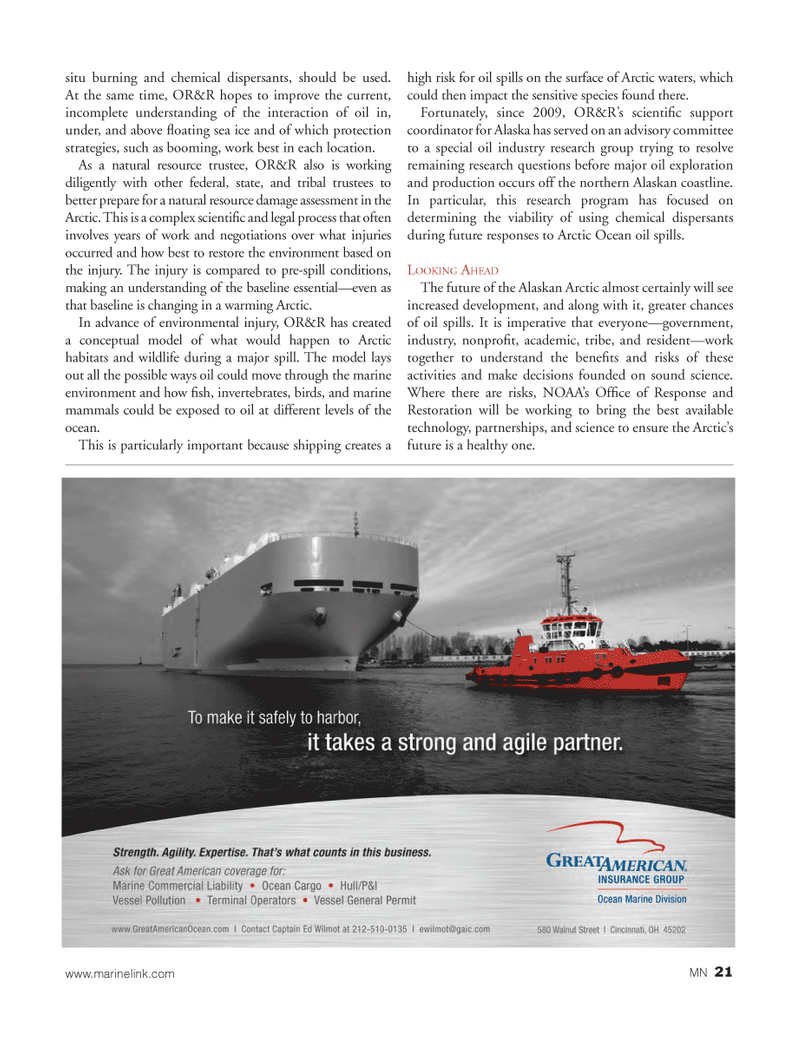
Page 21: of Marine News Magazine (December 2012)
Innovative Products &
Read this page in Pdf, Flash or Html5 edition of December 2012 Marine News Magazine
situ burning and chemical dispersants, should be used. At the same time, OR&R hopes to improve the current, incomplete understanding of the interaction of oil in, under, and above ß oating sea ice and of which protection strategies, such as booming, work best in each location. As a natural resource trustee, OR&R also is working diligently with other federal, state, and tribal trustees to better prepare for a natural resource damage assessment in the Arctic. This is a complex scientiÞ c and legal process that often involves years of work and negotiations over what injuries occurred and how best to restore the environment based on the injury. The injury is compared to pre-spill conditions, making an understanding of the baseline essentialÑeven as that baseline is changing in a warming Arctic. In advance of environmental injury, OR&R has created a conceptual model of what would happen to Arctic habitats and wildlife during a major spill. The model lays out all the possible ways oil could move through the marine environment and how Þ sh, invertebrates, birds, and marine mammals could be exposed to oil at different levels of the ocean. This is particularly important because shipping creates a high risk for oil spills on the surface of Arctic waters, which could then impact the sensitive species found there. Fortunately, since 2009, OR&RÕs scientiÞ c support coordinator for Alaska has served on an advisory committee to a special oil industry research group trying to resolve remaining research questions before major oil exploration and production occurs off the northern Alaskan coastline. In particular, this research program has focused on determining the viability of using chemical dispersants during future responses to Arctic Ocean oil spills. LOOKING AHEADThe future of the Alaskan Arctic almost certainly will see increased development, and along with it, greater chances of oil spills. It is imperative that everyoneÑgovernment, industry, nonproÞ t, academic, tribe, and residentÑwork together to understand the beneÞ ts and risks of these activities and make decisions founded on sound science. Where there are risks, NOAAÕs OfÞ ce of Response and Restoration will be working to bring the best available technology, partnerships, and science to ensure the ArcticÕs future is a healthy one. www.marinelink.com MN 21

 20
20

 22
22
